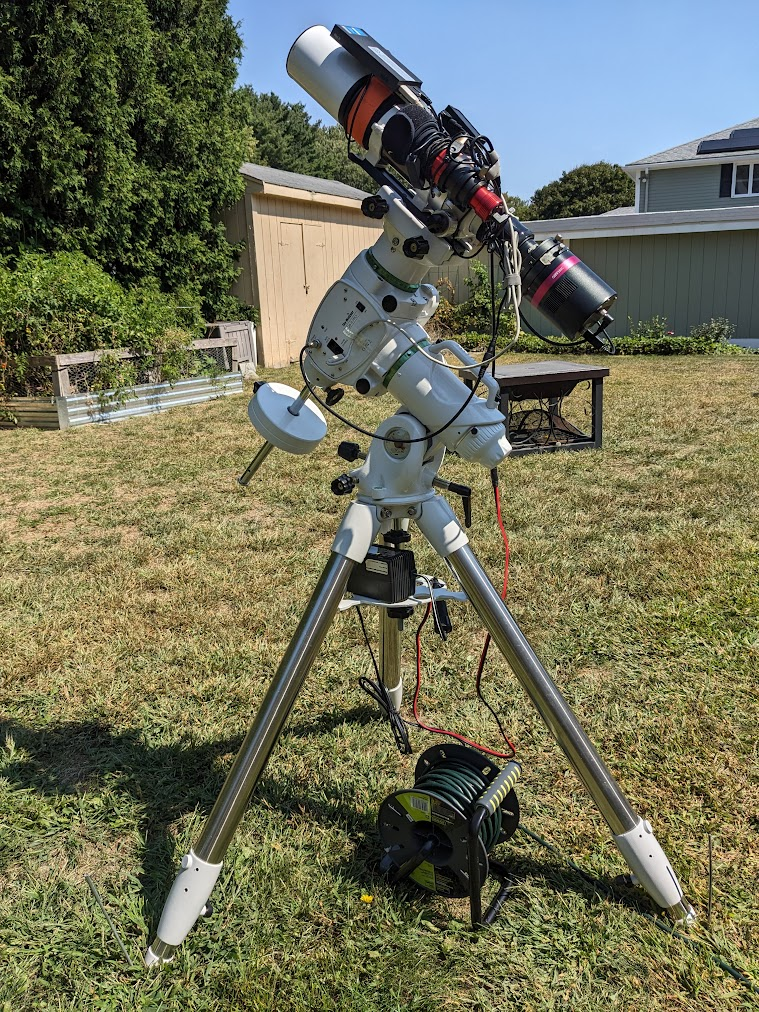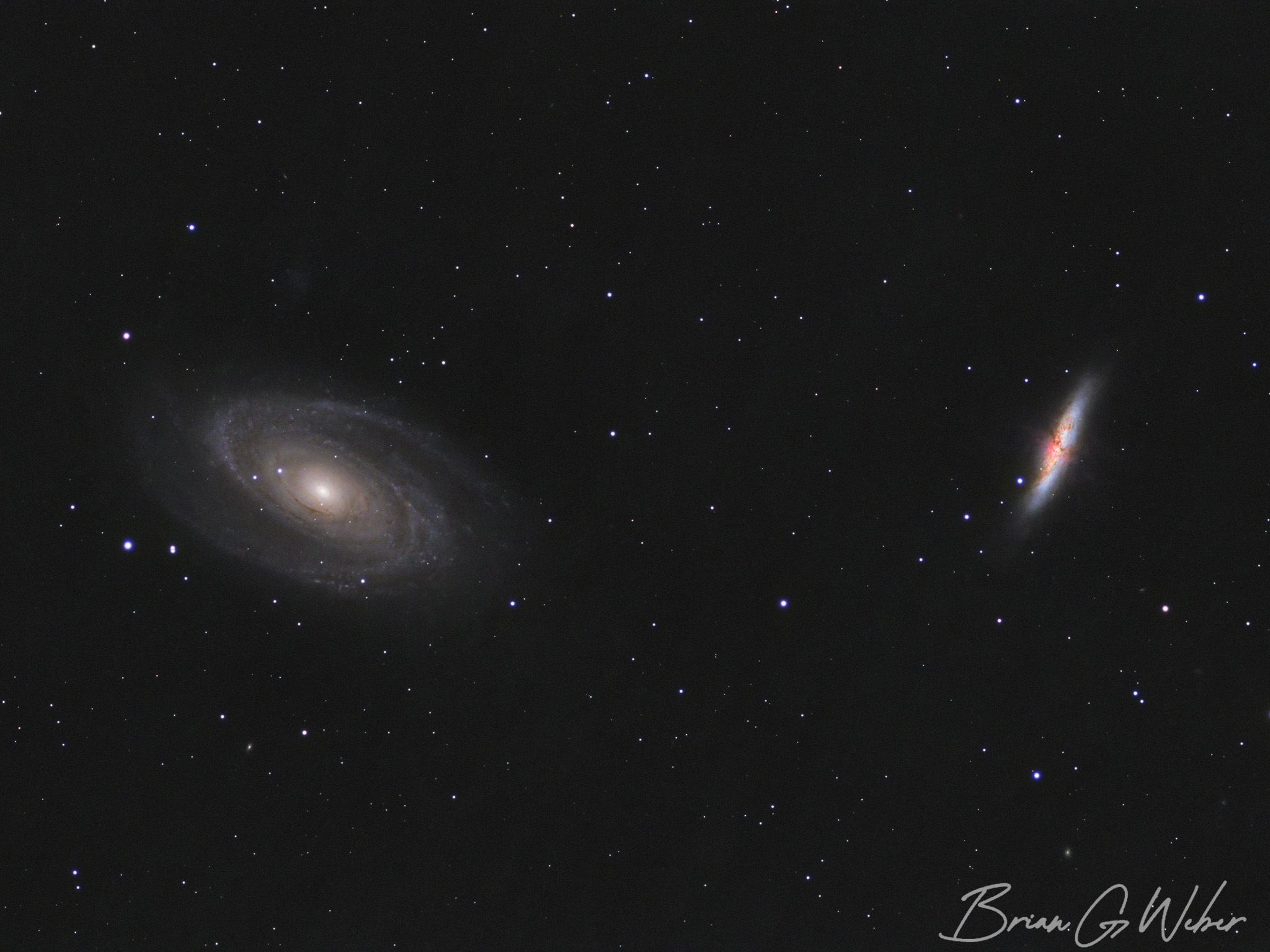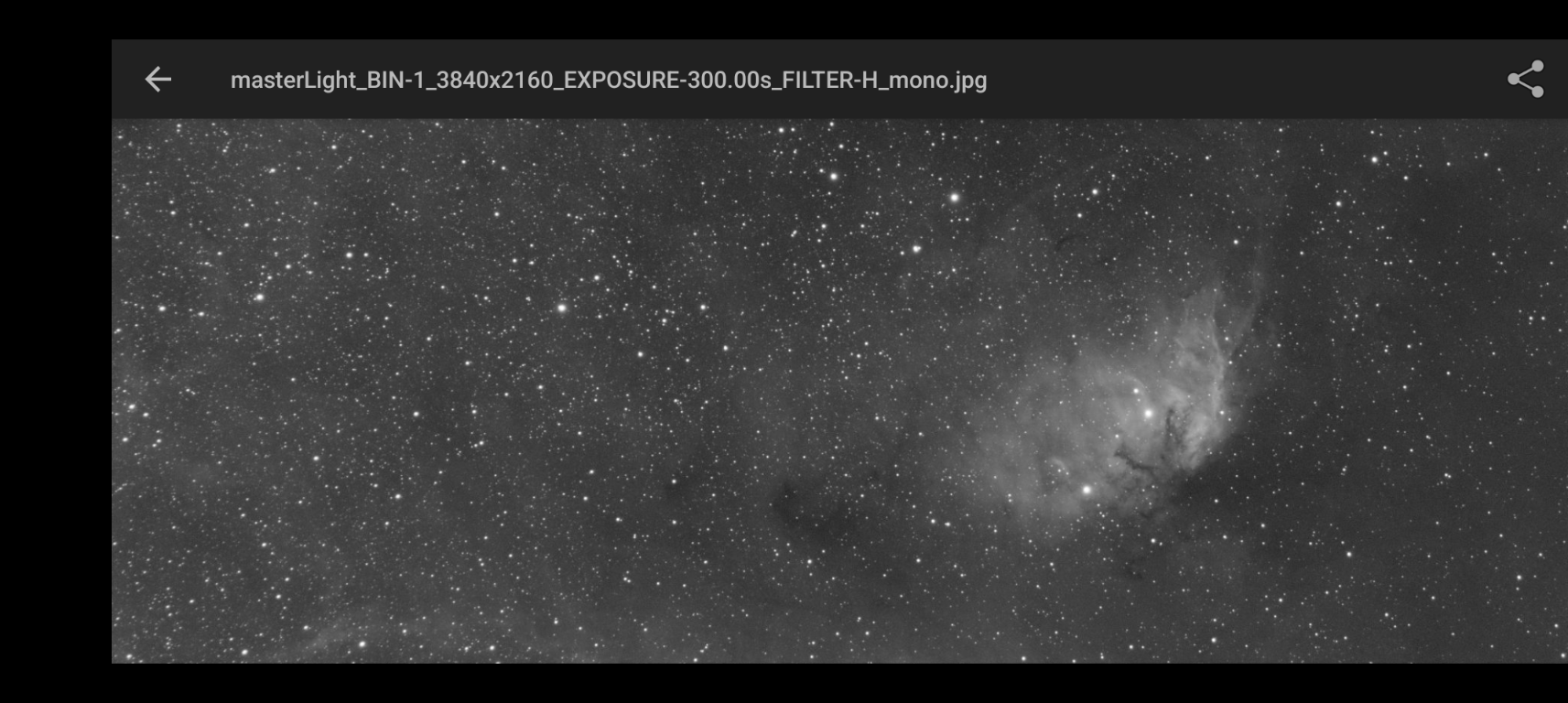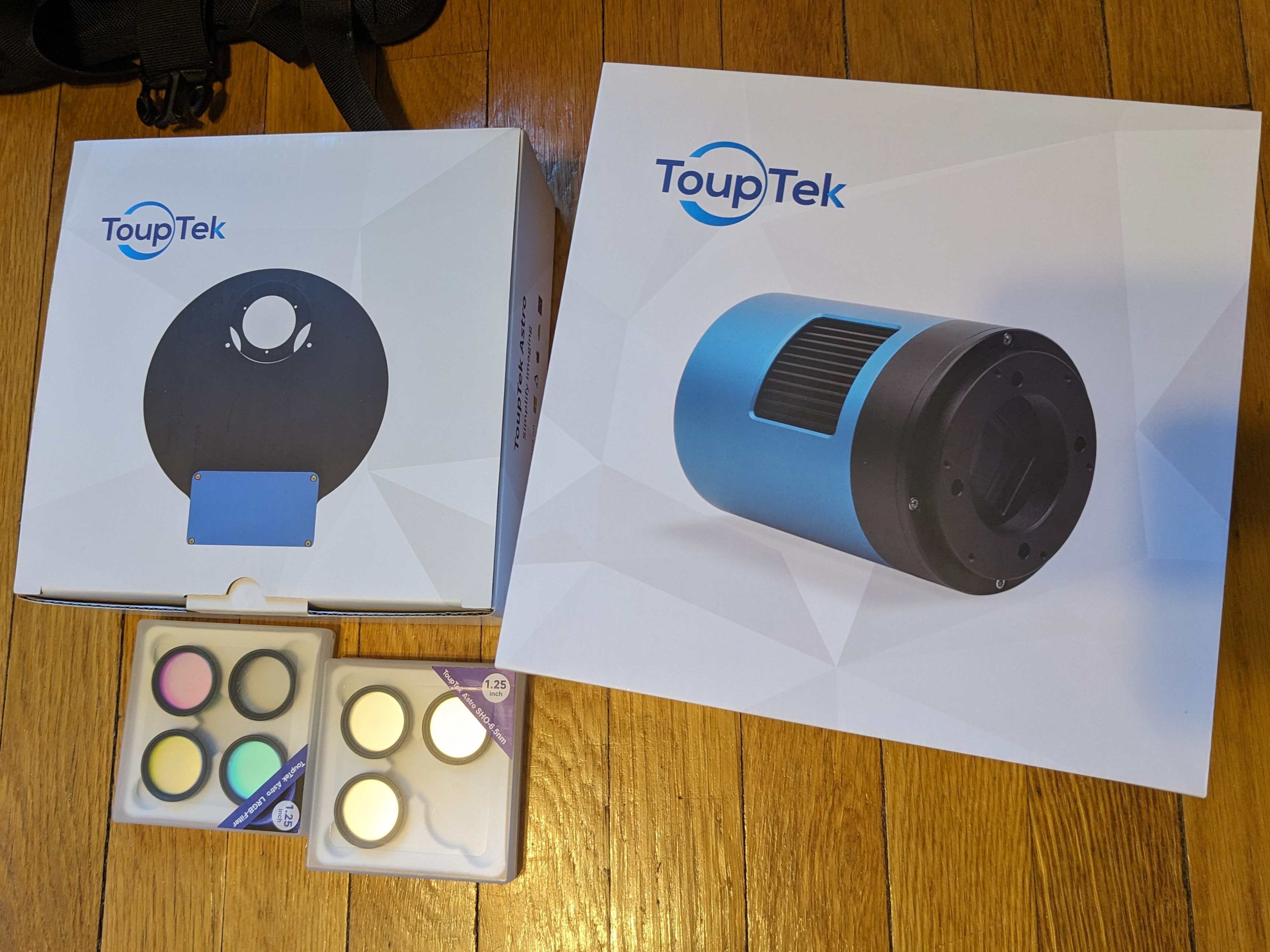· Astrophotography · 5 min read
Monochrome Astrophotography Rig
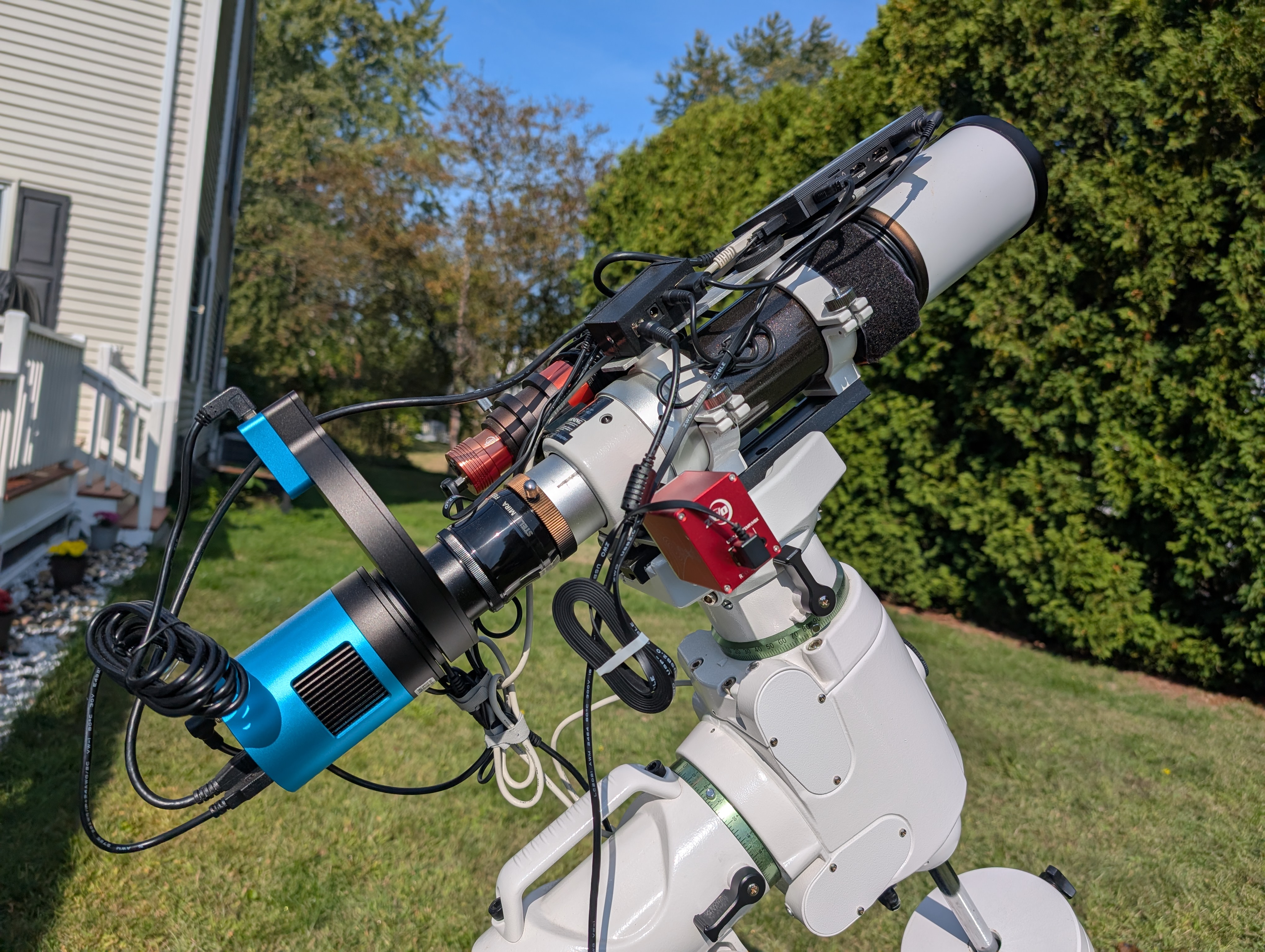
Astrophotography rigs come in all shapes and sizes. Here’s the one I use along with some of the images I have captured over the past couple years.
This is the magical pile of cables, electronics, and optics
The Basic Rig
The basic components needed for astrophotography are:
- Mount - the platform for the whole operation. This role can be played by a simple tripod, a motorized star tracker, or a fully computerized mount.
- Telescope or Lens - this provides magnification for imaging. The magnification is measured in focal length. More focal length = more magnification. The focal ratio describes the light gathering capabilities - lower means more light is collected.
- Camera - ranges from webcams, to DSLRs, to dedicated astro cameras with cooling capabilities
My rig:
- Mount: SkyWatcher EQ6-R Pro - this is a motorized equatorial mount. Using either the included hand controller or a computer, this mount can automatically move to a set location in the sky and then match the rotation speed of the sky to make the stars appear stationary for imaging. This mount is heavy, powerful, and accurate - it can comfortably carry a much larger and heavier telescope than I currently have on it.
- Telescope: SkyWatcher EvoStar 72ED - this is a relatively inexpensive refactor telescope with a focal length of 420mm. Refractor telescopes use lenses to provide magnification, while reflector telescopes use mirrors.
- Camera: ToupTek ATR585M - this is a cooled astro camera with a small sensor. Stock DSLRs have internal filters that block most of the red emissions from hydrogen gas in nebulas, while astro cameras (and DSLRs that have been modified) do not have this filter. Between this sensitivity to red emissions and a built-in cooler to control the temperature, astro cameras are a great tool for the job. This camera is monochrome, which means filters are needed to capture the different colors for combination in post-processing.
Extras
While astrophotography is possible with a simple tripod, camera, and lens, there are a lot of tools to greatly simplify the process.
- Filter Wheel - in order to produce a color image with a monochrome camera, filters are used. In order to avoid constantly swapping filters manually, an automatic filter wheel can be used. This filter wheel holds 7 different 1.25” filters and has a motor to rotate through them. The software can instruct the filter wheel to go to position 5 and the filter wheel will swap to that one.
- Field Flattener - this optical device helps flatten out the image from the telescope.
- Dew straps - I have a USB-powered strap with heating elements on both my guide scope and main scope. These straps warm the scope to ensure dew doesn’t collect when it is humid out.
- ZWO Electronic Autofocuser (EAF) - this device consists of a stepper motor and a coupler that connects it to the focuser on the telescope. Once connected, the computer can change the focus by instructing the stepper motor to move to certain positions. When combined with the camera and software on the computer, the rig is able to automatically focus based on the size of the stars detected. This means no more manual focusing to start the session and the rig is able to re-focus when it detects a focus shift (typically caused by ambient temperature changes). This is extra helpful with the automatic filter wheel because the filters have slightly different focus points. After some initial setup, N.I.N.A. knows that if it swaps from the L filter to the S filter, it needs to change the focus by a certain number of steps.
- SVBony SV165 guide scope + ZWO ASI120mm mini camera - these two components together enable autoguiding. This small mono camera takes shorter exposures continuously during the session. The software identifies several stars in the guide camera image and checks for movement from the initial position. When movement is detected, the software tells the mount to move slightly to correct. This ensures accurate tracking to avoid any star distortion due to movement.
- Mele 3Q mini PC - this small computer runs Windows 11 to control the rig. All of the devices plug into the USB ports on the computer and are controlled by open source software called N.I.N.A. From N.I.N.A, I can configure a sequence of activities for the system to execute while I hang out inside.
- DeepSkyDad DC Hub - this little box is super handy for power distribution. I have one power cord that runs up to my rig and then I run cables from the hub to the mini PC, camera, and mount. The dew straps also plug in here.
- Extension Cord - I know, it’s just an extension cord, but the convenience of being able to quickly roll up the cord is a time saver.
Filters
Filters are designed to control which wavelengths of light reach your camera:
- LRGB filters - these filters are used to capture broadband images like galaxies or dark nebulas. The L filter is clear and is used to bring out the detail across all the other filters.
Here is the processed M81 & M82 image in color
- SHO filters - these filters are used to separate narrower bands of emissions and block out light and moon pollution.
Here is the processed M16 (Eagle Nebula) image with the red = S, green = H, blue = O
Conclusion
These are all the components that make up my astrophotography rig. Everything plugs into the mini PC and is controlled by N.I.N.A. Here are some details about how I run my mono sessions using N.I.N.A.
Share:
